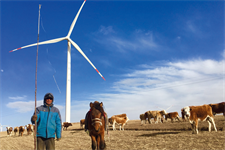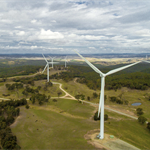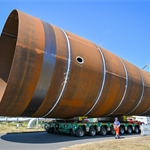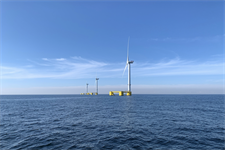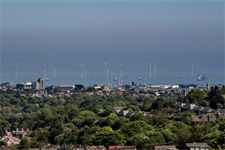Chinese wind power additions up 72% in first half of 2021
Energy Disrupter
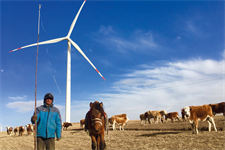
China connected 10.8GW of new wind power capacity to the grid in the first half of 2021 – an increase of 72% year on year – according to government figures.
Meanwhile, wind power generation increased year on year, while curtailment decreased following completion of ultra-high voltage transmission lines.
In total, 10,840MW of new wind power was connected to the grid between 1 January and 30 June, according to China’s National Energy Administration (NEA).
This includes 8,694MW of onshore wind and 2,146MW of offshore wind, Wang Dapeng, director of China’s new energy and renewable energy department (part of the NEA), said.
The NEA has not forecast how much wind power capacity is due to be connected to the grid in the second half of 2021.
It reported that an all-time high 71.7GW of Chinese wind power capacity was connected to the grid in 2020 as developers worked frantically to claim onshore wind subsidies before they were phased out. However, this figure likely included more than 25GW of wind capacity that was installed in 2019 but only connected to the grid in 2020.
Subsidies for China’s new offshore wind are due to expire at the end of 2021.
Generation and curtailment
Meanwhile, wind power generation in China increased to 344.18TWh in the first half of the year – up 44.6% from the same period one year earlier
Wind curtailment fell 0.3 percentage points year on year to 3.6%. Significant cuts in curtailment were made in Xinjiang and Gansu in the north, and Hunan in the south, where curtailment rates were 8%, 4% and 2% respectively.
In the past, China has faced high curtailment rates of renewable energy, especially for wind.
In 2018, the National Energy Administration formulated the “three-year action plan for clean energy consumption” to tackle this. Since then, the curtailment rate has been falling year by year.
By the end of 2020, 14 AC UHV (alternating current ultra-high voltage) and 16 DC UHV (direct current ultra-high voltage) transmission lines had been completed and commissioned. These included lines from Xilingol League to Shandong, Inner Mongolia to Tianjin, Inner Mongolia to Jinzhong, Jiuquan to Hunan, and Qinghai to Henan.
This has enabled power generated by wind farms in the north and west to be transferred to populous regions and load centres in the east. Local consumption of wind energy also increased in northern and western provinces, where the curtailment rates are higher.

